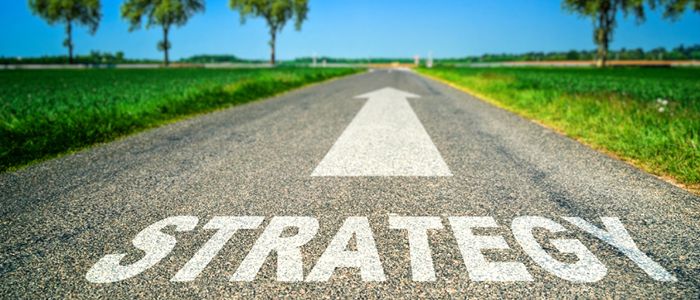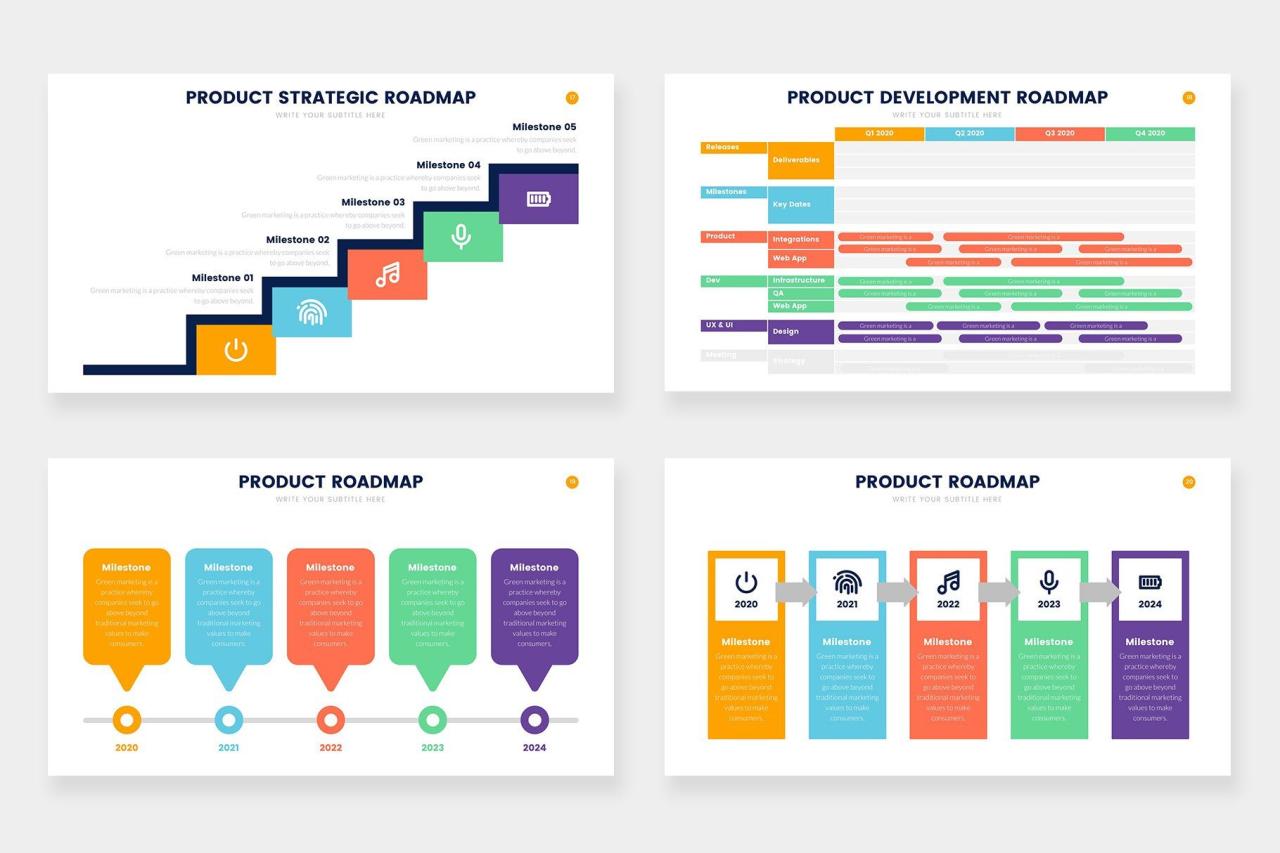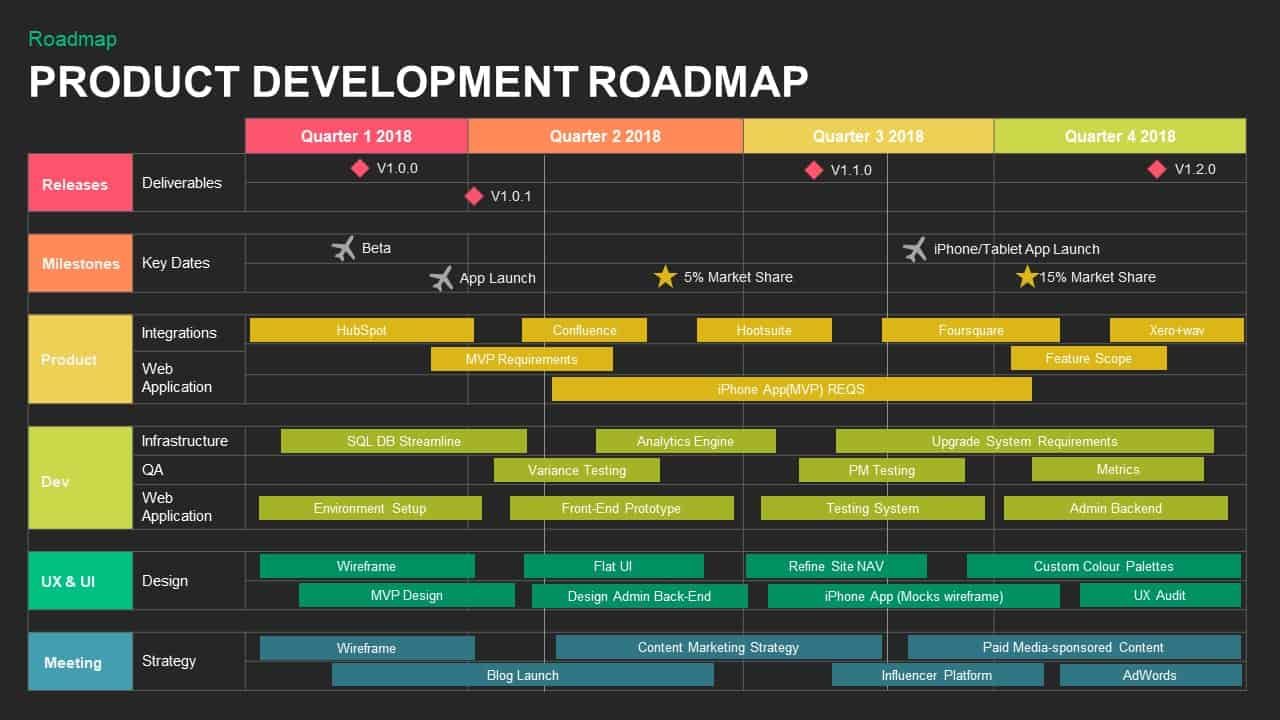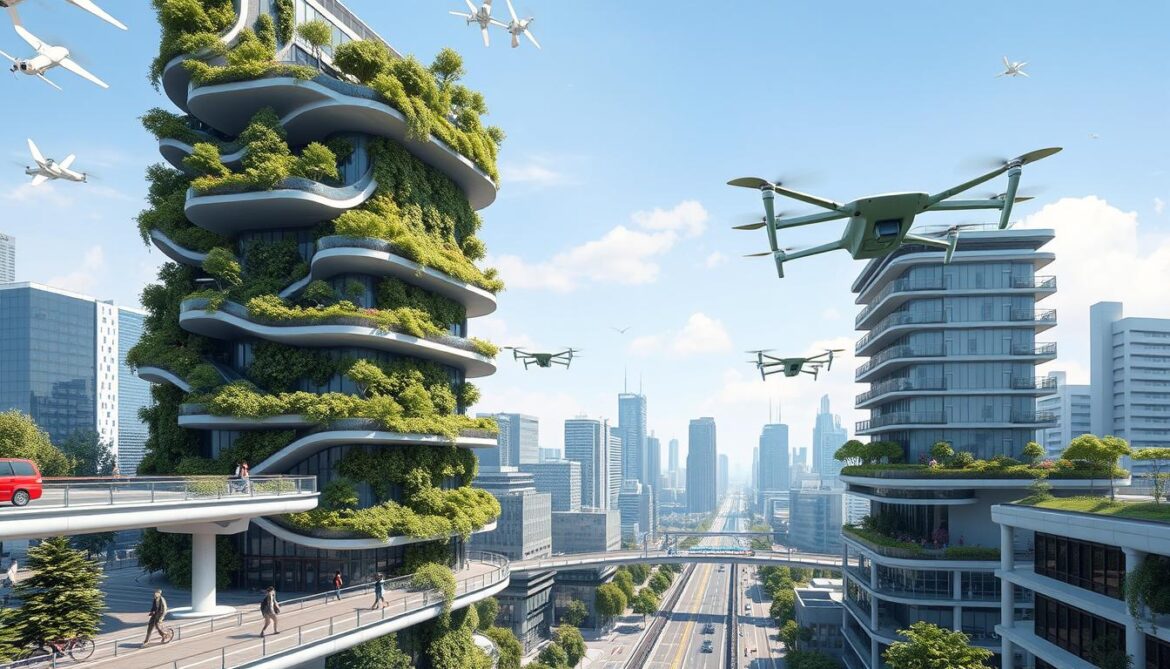In the relentless march of technological progress, businesses find themselves navigating an increasingly complex and competitive landscape. Merely reacting to trends is no longer sufficient; instead, a proactive, visionary approach is paramount. This is where strategic tech roadmaps become indispensable. Far from being simple Gantt charts, these meticulously crafted plans serve as the definitive blueprint for an organization’s technological journey, aligning IT initiatives with overarching business objectives. They encapsulate not just what technologies will be adopted, but why they matter, how they will be implemented, and when they will deliver tangible value. Mastering the art of creating and executing these roadmaps is the key to crafting a resilient, innovative, and prosperous tomorrow for any enterprise.
The Imperative for a Strategic Technology Vision
In an era defined by rapid innovation and disruption, operating without a clear technological compass is akin to sailing without a destination. The need for a strategic tech roadmap stems from several critical business realities.
A. Navigating Unprecedented Change and Disruption
The pace of technological evolution is accelerating exponentially. New paradigms like AI, blockchain, quantum computing, and advanced biotechnologies are not just emerging; they are converging to create entirely new industries and dismantle old ones. Without a strategic roadmap, organizations risk being left behind, unable to adapt to these shifts.
- Market Volatility: Consumer preferences, regulatory landscapes, and competitive pressures can change overnight. A technology roadmap provides the agility to pivot and adapt, ensuring that the IT infrastructure and applications can support new business models or respond to market shifts.
- Emerging Technologies: Identifying and evaluating emerging technologies (e.g., generative AI, Web3, immersive realities) is a continuous challenge. A roadmap acts as a filter, allowing organizations to selectively invest in technologies that offer a genuine competitive advantage rather than chasing every fleeting trend.
- Competitive Pressure: Rivals are constantly leveraging technology to gain an edge. A well-defined roadmap enables an organization to proactively build differentiated products, optimize operations, and enhance customer experiences before competitors do.
B. Optimizing Resource Allocation and Investment
Technology investments are significant. Without a strategic roadmap, resources (time, money, talent) can be scattered across disparate, uncoordinated projects, leading to waste and inefficiency.
- Prioritization and Focus: A roadmap forces difficult but necessary conversations about prioritization. It ensures that finite resources are directed towards initiatives that deliver the highest strategic value and contribute directly to business goals, avoiding ‘pet projects’ or fragmented efforts.
- Cost Efficiency: By planning technology investments proactively, organizations can leverage economies of scale, negotiate better vendor contracts, and avoid costly reactive fixes or last-minute, rushed implementations. It helps in predicting capital expenditures and operational expenses.
- Talent Alignment: A clear technology roadmap helps in identifying future skill requirements. This allows organizations to proactively invest in training, upskilling existing staff, or recruiting new talent with the necessary expertise, ensuring that the human capital aligns with the technological vision.
C. Enhancing Collaboration and Stakeholder Alignment
Technology is no longer confined to the IT department; it permeates every facet of a modern business. A strategic roadmap acts as a universal language, fostering synergy across various departments.
- Bridging Silos: Traditionally, business units set goals, and IT implemented solutions in isolation. A roadmap forces cross-functional collaboration, ensuring that business needs directly inform technology decisions and vice versa, breaking down organizational silos.
- Shared Vision and Buy-in: When all stakeholders (executives, product managers, marketing, sales, operations, and IT) contribute to and understand the roadmap, it fosters a shared vision and generates essential buy-in. This alignment reduces friction and accelerates execution.
- Clear Communication: The roadmap provides a clear, concise communication tool. It allows leadership to articulate the technological direction to employees, investors, and partners, ensuring everyone is on the same page and working towards common objectives.
D. Risk Mitigation and Future-Proofing
Every technology decision carries inherent risks, from security vulnerabilities to integration challenges. A strategic roadmap helps in identifying and mitigating these risks proactively.
- Security Integration: The roadmap can embed security-by-design principles, ensuring that new technologies are evaluated for their security implications from the outset, rather than being patched on later.
- Technical Debt Management: Over time, unaddressed technical debt can cripple an organization’s ability to innovate. A roadmap can explicitly allocate resources to tackle legacy system modernization, refactoring, and technical debt reduction, preventing it from accumulating unchecked.
- Scalability and Resilience: By planning for future growth and potential failures, the roadmap ensures that new systems are designed with scalability, high availability, and disaster recovery in mind, future-proofing the organization against unforeseen demands or disruptions.
Foundational Elements of a Strategic Technology Roadmap
A robust strategic technology roadmap is not a monolithic document but rather a dynamic collection of interconnected elements, each contributing to its comprehensive nature.
A. Vision and Mission Alignment
At its core, a technology roadmap must directly serve the overarching corporate vision and mission. It articulates how technology will be a key enabler in achieving long-term business goals, such as market leadership, enhanced customer experience, operational efficiency, or new revenue streams.
- Long-Term Goals: Clearly define the 3-5 year strategic business objectives that the technology initiatives will support. This could include expanding into new markets, launching a disruptive product line, or achieving a certain level of operational automation.
- Strategic Imperatives: Translate these business goals into actionable technology imperatives. For example, ‘improve customer retention by 15%’ might translate into ‘implement a unified customer data platform’ or ‘develop personalized AI-driven recommendation engines’.
B. Current State Analysis (As-Is Architecture)
Before planning for the future, it’s critical to have a clear understanding of the current technological landscape (the “as-is” architecture). This involves a comprehensive audit of existing systems, applications, infrastructure, and technical capabilities.
- System Inventory: Document all existing hardware, software, licenses, and cloud services.
- Application Portfolio Assessment: Evaluate each application for its business value, technical health, operational cost, and dependencies. Identify legacy systems that are bottlenecks or pose significant technical debt.
- Infrastructure Assessment: Analyze current network topology, data center capabilities, cloud consumption, and security posture. Identify capacity constraints or single points of failure.
- Skills Inventory: Assess the current capabilities and skill sets of the IT workforce. Identify gaps that need to be addressed through training or recruitment to support future initiatives.
C. Future State Definition (To-Be Architecture)
This is the visionary component, outlining the desired technological landscape (the “to-be” architecture) that will support the strategic business goals. It’s not just a list of technologies but a holistic view of how systems will operate.
- Target Architecture: Define the high-level architecture for future applications, data platforms, and infrastructure. This might involve adopting cloud-native patterns (microservices, serverless), specific cloud providers, or hybrid deployment models.
- Key Technology Pillars: Identify the core technological pillars that will underpin the future state (e.g., AI/ML, Big Data analytics, robust cybersecurity, cloud-native development).
- Desired Capabilities: Outline the new technical capabilities the organization will acquire or enhance (e.g., real-time data processing, advanced analytics, enhanced security posture, global scalability).
D. Phased Initiatives and Milestones
A roadmap breaks down the journey from the current state to the future state into manageable, time-bound initiatives and milestones. This provides a clear path for execution.
- Strategic Themes/Programs: Group related initiatives into larger strategic themes or programs (e.g., ‘Cloud Migration Program’, ‘Customer 360 Initiative’, ‘AI Innovation Hub’).
- Phases and Milestones: Define distinct phases for each initiative, with clear deliverables and measurable milestones. These phases are typically laid out over quarters or fiscal years (e.g., Q1-Q2: Foundation Building, Q3-Q4: Pilot Implementation, Year 2: Full Rollout).
- Dependencies and Sequencing: Identify dependencies between initiatives. Some foundational work (e.g., cloud platform setup, security baseline) must precede application modernization. Careful sequencing is crucial to avoid bottlenecks.
E. Key Performance Indicators (KPIs) and Metrics
A strategic roadmap is not complete without defining how success will be measured. Key Performance Indicators (KPIs) and metrics provide objective means of tracking progress and demonstrating value.
- Business Value Metrics: Measure the impact on business outcomes (e.g., revenue growth, customer satisfaction scores, operational cost reduction, time-to-market for new features).
- Technical Performance Metrics: Track improvements in system performance (e.g., latency, uptime, throughput), security posture (e.g., vulnerability count, incident response time), and development efficiency (e.g., deployment frequency, lead time for changes).
- Cost Metrics: Monitor cloud spend, return on investment (ROI) for specific technology initiatives, and total cost of ownership (TCO) reductions.
F. Risk Assessment and Mitigation Strategies
Proactive identification and planning for potential risks are essential. This includes technical, operational, financial, and organizational risks.
- Technical Risks: (e.g., integration challenges, technology obsolescence, scaling limitations).
- Operational Risks: (e.g., lack of skilled personnel, downtime during migration).
- Financial Risks: (e.g., cost overruns, lower-than-expected ROI).
- Organizational Risks: (e.g., resistance to change, lack of executive sponsorship). For each identified risk, develop clear mitigation strategies and contingency plans.
G. Governance and Review Process
A roadmap is a living document that requires continuous monitoring and adaptation. A defined governance and review process ensures its ongoing relevance.
- Regular Reviews: Schedule periodic reviews (e.g., quarterly) with key stakeholders to assess progress, re-evaluate priorities, and adjust the roadmap based on new information, market changes, or unforeseen challenges.
- Change Management: Establish a formal process for proposing and approving changes to the roadmap, ensuring that modifications are strategic and well-considered.
- Feedback Loops: Implement mechanisms to gather feedback from development teams, operations, and business units to ensure the roadmap remains practical and aligns with ground-level realities.
The Process of Crafting a Strategic Tech Roadmap
Creating a truly effective strategic technology roadmap is an iterative and collaborative process that moves beyond mere technical planning.
A. Executive Sponsorship and Strategic Alignment
The journey must begin at the top. Strong executive sponsorship is non-negotiable. The technology roadmap must be intrinsically linked to the highest-level corporate strategy.
- Engage Leadership: Conduct workshops and interviews with C-suite executives (CEO, CFO, COO, CMO) to deeply understand the company’s long-term vision, market positioning, financial goals, and major strategic initiatives for the next 3-5 years.
- Translate Business to Tech: This is the most crucial step: translate vague business aspirations into concrete technological capabilities and enablers. For example, ‘become a data-driven organization’ translates into ‘implement a unified data lake, real-time analytics platform, and MLOps pipeline’.
- Secure Budget and Resources: Gain commitment for the necessary financial investment and human resources required to execute the roadmap. This often involves demonstrating clear ROI or strategic necessity.
B. Comprehensive Discovery and Assessment
Before charting the future, a thorough understanding of the present is essential. This involves a multi-faceted discovery and assessment phase.
- Deep Dive into Current State: Conduct technical audits of existing applications, infrastructure, data models, security controls, and operational processes. Identify bottlenecks, legacy systems, technical debt, and areas of inefficiency.
- Stakeholder Interviews: Engage with a wide array of stakeholders across all business units. Understand their pain points with current systems, their future needs, desired capabilities, and unmet demands. This ensures the roadmap is grounded in real-world operational realities.
- Technology Trend Analysis: Research and analyze relevant industry technology trends (e.g., generative AI, blockchain, quantum computing, cybersecurity advancements, sustainable IT) that could impact the business. Evaluate their potential for disruption or competitive advantage.
- Competitive Benchmarking: Analyze competitors’ technological strategies. What are they doing well? Where are their weaknesses? How can technology differentiate your organization?
C. Visioning the Future State (To-Be)
This is the creative phase where the future technological landscape is conceptualized, directly addressing the identified business needs and leveraging relevant emerging technologies.
- Define Target Architecture: Outline the high-level conceptual architecture for the future. This includes defining cloud strategy (public, private, hybrid, multi-cloud), architectural patterns (microservices, serverless), core platforms (data, AI, security), and key integration points.
- Prioritize Capabilities: Based on business value and technical feasibility, prioritize the new technological capabilities to be built or acquired. Use frameworks like “Must-Have,” “Should-Have,” “Could-Have.”
- Identify Key Technologies: Select the specific technologies, platforms, and vendors that will enable the future state. This involves thorough evaluation, proof-of-concepts, and risk assessment.
- Roadmap Themes and Phasing: Group related initiatives into logical themes or programs (e.g., ‘Cloud Adoption’, ‘Customer Experience Transformation’, ‘Data Monetization’). Define clear phases for these themes (e.g., foundational work, pilot projects, scaled rollout) over a multi-year horizon.
D. Detailed Initiative Planning and Sequencing
Once the high-level future state is defined, each initiative needs more granular planning and careful sequencing.
- Define Deliverables and Milestones: For each initiative, articulate concrete deliverables and measurable milestones. Break down large initiatives into smaller, achievable projects.
- Identify Dependencies: Crucially, map out the dependencies between initiatives. For example, a customer data platform might be a prerequisite for personalized marketing AI. Overlooking dependencies can lead to significant delays.
- Resource Allocation: Estimate the resources required for each initiative, including personnel (developers, architects, project managers, security experts), budget, and timeframes.
- Risk Assessment and Mitigation: For each initiative, conduct a detailed risk assessment. Identify potential technical risks (integration, scalability), operational risks (talent, change management), and financial risks. Develop specific mitigation strategies and contingency plans.
E. Communication and Socialization
A roadmap is only effective if it’s understood and embraced by the entire organization. Effective communication is continuous, not a one-time event.
- Tailored Messaging: Develop different versions of the roadmap for various audiences: a high-level executive summary, a detailed plan for IT teams, and a business-centric overview for business units, highlighting benefits relevant to them.
- Regular Presentations and Workshops: Conduct regular presentations and interactive workshops across departments to explain the roadmap, gather feedback, and address concerns.
- Living Document: Emphasize that the roadmap is a living document, subject to review and adaptation. This encourages open feedback and prevents it from becoming a static, forgotten plan.
- Internal Marketing: Actively ‘market’ the roadmap internally. Highlight successes, milestones achieved, and the positive impact of technology initiatives on business outcomes.
F. Iterative Execution and Continuous Governance
A strategic roadmap is not a rigid decree but a flexible guide. Its execution requires continuous monitoring, evaluation, and adaptation.
- Establish Governance Model: Define clear roles and responsibilities for roadmap governance. This typically includes a steering committee (cross-functional leadership), an architecture review board (technical oversight), and project teams (execution).
- Monitor Progress and KPIs: Continuously track progress against defined milestones and monitor the KPIs established in the planning phase. Use dashboards and regular reporting to provide transparency.
- Regular Review and Adjustment: Schedule frequent (e.g., quarterly, bi-annual) formal reviews of the roadmap with all key stakeholders. These reviews are critical for:
- Assessing if the roadmap is still aligned with evolving business strategy.
- Evaluating the performance of ongoing initiatives.
- Incorporating new market insights or technological advancements.
- Making necessary adjustments to priorities, timelines, or resource allocations.
- Embrace Agility: While a roadmap provides long-term direction, its execution should leverage agile methodologies for individual projects. This allows for flexibility and responsiveness to changes within each initiative.
Key Trends Influencing Future Technology Roadmaps
The landscape within which strategic technology roadmaps are built is dynamic. Several overarching trends are profoundly influencing how organizations will craft their technological futures.
A. Hyper-Automation and AI-Driven Operations
The drive for efficiency and scale is pushing organizations towards hyper-automation, encompassing not just robotic process automation (RPA) but also intelligent automation powered by Artificial Intelligence (AI) and Machine Learning (ML). Future roadmaps will increasingly focus on automating complex business processes, IT operations (AIOps), and security responses. This involves leveraging AI for predictive analytics, anomaly detection, and self-healing infrastructure, leading to ‘lights-out’ data centers and more autonomous systems.
B. Sustainable IT and Green Computing
As environmental concerns become paramount, sustainable IT and green computing are no longer optional but strategic imperatives. Future roadmaps will integrate initiatives focused on:
- Energy Efficiency: Optimizing cloud resource consumption, leveraging energy-efficient hardware, and choosing cloud providers committed to renewable energy.
- Resource Optimization: Reducing waste through efficient data storage, compute resource scaling, and intelligent decommissioning of unused infrastructure.
- Circular Economy Principles: Considering the entire lifecycle of hardware and software, from responsible sourcing to recycling. Organizations will seek to reduce their carbon footprint through their technology choices.
C. Human-Centric AI and Ethical Considerations
The pervasive integration of AI into applications brings forth critical human-centric and ethical considerations. Future roadmaps must explicitly address:
- AI Governance: Establishing frameworks for responsible AI development, including fairness, transparency, accountability, and privacy.
- Explainable AI (XAI): Prioritizing the development of AI models whose decisions can be understood and audited.
- Human-AI Collaboration: Designing systems where AI augments human capabilities rather than replacing them, focusing on ethical human-machine interaction. This ensures AI adoption is both innovative and responsible.
D. Cybersecurity Mesh and Proactive Defense
Traditional perimeter-based security is insufficient in a distributed, cloud-native world. Future roadmaps will pivot towards a cybersecurity mesh architecture.
- Decentralized Security: Shifting security enforcement to individual identity and resource access rather than a centralized perimeter.
- Zero Trust Principles: Implementing ‘never trust, always verify’ for every access request, regardless of origin.
- Threat Intelligence and Proactive Defense: Leveraging AI and machine learning for predictive threat intelligence, automated threat detection, and rapid, orchestrated response capabilities. This moves from reactive to highly proactive security postures.
E. Immersive Experiences: Metaverse and Digital Twins
The emerging concepts of the metaverse and pervasive digital twins will significantly influence future technology roadmaps.
- Digital Twins: Creating virtual replicas of physical assets, processes, or even entire environments for simulation, monitoring, and optimization. This has applications from manufacturing to smart cities and healthcare.
- Metaverse Exploration: Investigating how immersive 3D virtual environments can be leveraged for collaboration, customer engagement, product development, or new revenue streams. This may involve investments in extended reality (XR) technologies and underlying infrastructure.
F. Quantum Computing Readiness
While still in its nascent stages, quantum computing represents a long-term, potentially disruptive technology. Strategic roadmaps may include:
- Monitoring Developments: Keeping a pulse on quantum research and breakthroughs.
- Quantum-Safe Cryptography: Researching and preparing for the transition to cryptographic algorithms that are resistant to attacks from future quantum computers.
- Exploratory Pilots: For certain industries (e.g., finance, pharmaceuticals, logistics), conducting small-scale pilot projects to explore quantum’s potential for specific optimization or simulation problems.
G. Decentralized and Distributed Architectures (Web3)
Beyond microservices, future roadmaps will increasingly explore technologies enabling more truly decentralized and distributed architectures, often associated with Web3.
- Blockchain and DLT: Investigating the use of blockchain and other distributed ledger technologies (DLT) for enhanced transparency, security, and immutability in supply chains, financial transactions, or data sharing.
- Decentralized Identity: Exploring self-sovereign identity solutions that give individuals more control over their personal data.
- Data Sovereignty: Designing architectures that support stricter data residency and sovereignty requirements across diverse global regions.
Conclusion
In an age where technology is not just a support function but a core driver of business strategy, mastering the creation and execution of strategic tech roadmaps is paramount. These meticulously crafted blueprints provide the essential foresight and guidance needed to navigate the complexities of digital transformation, ensuring that technological investments are precisely aligned with overarching business objectives. From optimizing resource allocation and enhancing cross-functional collaboration to mitigating risks and fostering continuous innovation, a well-defined roadmap serves as the ultimate compass for an organization’s journey into the future.
By embracing robust planning processes, leveraging the latest technological trends, and fostering a culture of adaptability and continuous improvement, businesses can transform their technology aspirations into tangible realities. The strategic tech roadmap is more than just a plan; it’s a living commitment to foresight, agility, and ultimately, sustained competitive advantage, meticulously crafting the tomorrow that businesses aspire to achieve.














